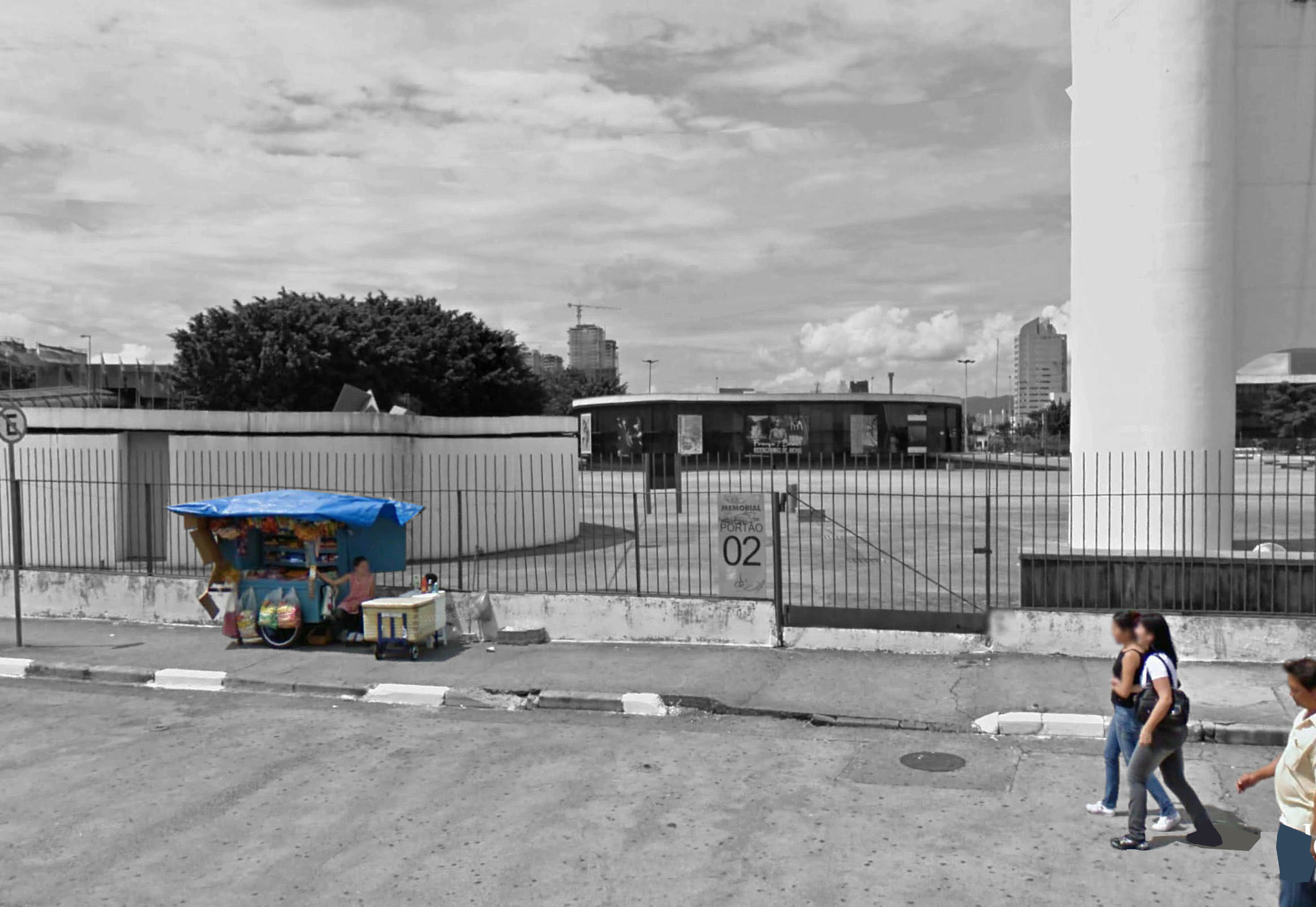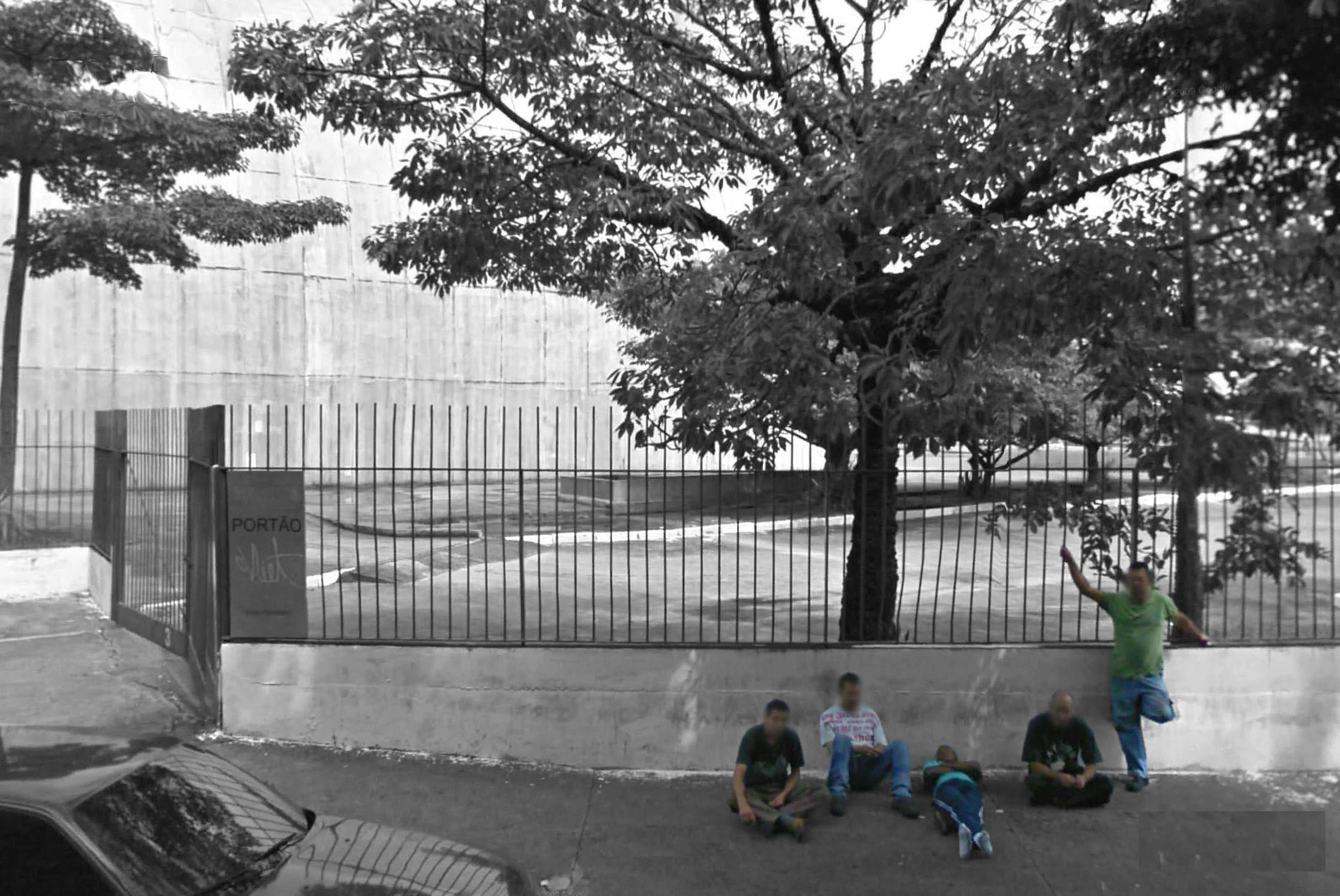Index
Images: Shadow Scripts' studies, 2011
‘Suor, sangue e pobreza marcaram a história desta América Latina tão desarticulada e oprimida. Agora urge reajustá‐la num monobloco intocável, capaz de fazê‐la independente e feliz.’
[‘Work, blood and poorness marked Latin America’s history, so disconnected and oppressed. Now it’s time to reframe it in one untouchable block, capable of making it independently and happy.’]
Oscar Niemeyer, on the Latin American Memorial project
The Latin American Memorial was a project intended to give a concrete expression to the idea of Latin American integration. Latin American countries do not form a united block and this project was envisioned as a way of creating a symbolic and physical space where this integration could happen. But in reality, it symbolizes the opposite.
Oscar Niemeyer was commissioned to design the architectural complex, and he invited Darcy Ribeiro, a well‐known Brazilian sociologist who was arrested during the dictatorship, to create the program for the foundation that manages the memorial. Ribeiro lived for many years in many countries of Latin America, and had substantial personal and professional experience in this area. He believed that Oscar Niemeyer’s sculptural forms would be able to translate this idea of unification.
Various factors contribute to the lack of unity among Latin American countries. First there is language: Brazil is the only country that speaks Portuguese, and the second language taught in schools is not Spanish but English. Similarly, the Spanish speaking countries teach English as a second language in schools, not Portuguese. A second factor to consider is the way that countries ‘look abroad’, as all countries do. Brazil and other Latin American countries look to Europe or to the US as a source of inspiration and an example to follow. Latin Americans rarely look to one another for ideas or inspiration – even the majority of countries that speak the same language and share a substantial cultural heritage. When this happens, any intention of actually understanding our neighbors disappears. Another important fact to be considered is that almost all countries from South America have been through dictatorships, which effectively disconnect them from the outside world and reinforce the lack of communication and exchange of ideas. Even after fighting those types of governments and getting a more democratic political system, the consequences of this poor communication remain.
By the time of the memorial’s construction, Brazil was going through a period of economic uncertainty under President José Sarney. Soon thereafter Brazil would be able to engage in the first open elections after more than twenty years under dictators. Orestes Quercia, the governor of Sao Paulo, saw the project as merchandising for his image and a way to improve his position in the presidential election. But the construction of the memorial became tinted by corruption scandals and at the opening, which happened on a hot day in March, 1989, from an expected 350,000 people, just a thousand showed up. People were unsatisfied with Brazil’s economic and political situation as well as the project’s cost, and they did not welcome it. The project was not even capable of bringing together the Brazilians who hosted it.
The ‘island effect’ of Latin America countries is symbolized by the fact that there is no connection with the project and the site where it is located, creating isolation and emptiness. The site, a neighborhood called Barra Funda, is well known for being a railroad connection between the capital, the country side of São Paulo state and the coast. It was the center of coffee trade during the end of the nineteenth and beginning of the twentieth century. It was mainly an industrial neighborhood during the early years, and these characteristics remain strong even today. During the 70s, the Barra Funda Terminal was constructed, one of the most important metro bus terminals of Sao Paulo. It is an area dominated by avenues and railroads that ‘cut’ the urban mesh. Buildings are mainly used for office or commercial purposes. Should the architect have chosen another area? Would the architect’s design (and his intent of integration) be capable of symbolizing a real integrated Latin America? The neighborhood where the Memorial is located was already a place with a certain isolation of the rest of the city, a part of the city somehow disconnected from the rest. Because of its avenues and some important city highways, it is not a pedestrian‐friendly area. It is a site that functions and is alive throughout weekly ‘business hours’. The existing gates around the two project plazas were built to reinforce security, but they reinforce isolation instead. Niemeyer’s project was not able to provide a solution that met the architect’s intention.
Images: informal activities happening outside the Latin American Memorial's gates
Seven buildings, each with specific programs – the Hall of Events, the Gallery, the Library, the Parliament building, the Creativity Pavilion, the Auditorium and the Administration building ‐ are distributed around two plazas. Both plazas are connected through a bridge over a busy avenue that literally divides the site, once again reinforcing separation, not integration. The main materials are white concrete and dark glazing, and concrete flooring with almost no landscaping aside from some spaced palm trees and water pools. One can walk for long periods without finding shade or places to rest in a place where benches are placed randomly. It is interesting to notice that Niemeyer’s sketches are already an indication of the emptiness of the space, the architect’s design signature. According to Niemeyer, commuters would be ‘inspired by the enormous impact of this architectural wonder’. Niemeyer wanted to create an aesthetic utopia that visually nourishes the Latin American spirit and thus enables it to put up with the harsh day‐to‐day reality that in the end, he (the architect) could not overcome through his project. Instead, the plaza, a place for the reunion of Latin Americans (as Niemeyer affirms through interviews), remains empty and the sculptural forms stand alone and dispersed in this voided space.
In ‘The Death and Life of Great American Cities’, Jane Jacobs, argues that the minimalist paradigms from modern urbanism produce urban spaces that are physically clean and organized but socially and spiritually dead. Jacobs argued that planning should be seeing on a human scale, where spaces and cultural references give the site a real sense of place. In the case of the Latin American Memorial, the space should have been treated as a place for people to convene and not as an architectural abstraction. The ‘Memorial’, with its order and cleanliness, denies the contradictions, the formal richness, the ambiguity, and the irregularities that exist not only in the Barra Funda neighborhood but throughout the region that it is supposed to honor. It should have been a place for people to exchange ideas and talk and build a sense of solidarity. It could have somehow changed the current seclusion of the existing neighborhood instead of becoming one more project to reaffirm its isolation from the rest of the city. Seen through this lens, the Memorial could be a perfect representation of Latin America, but it is not the Latin America that Niemeyer had hoped for. The Latin American Memorial symbolizes its countries isolation, and consequently the region’s continuing disintegration.






